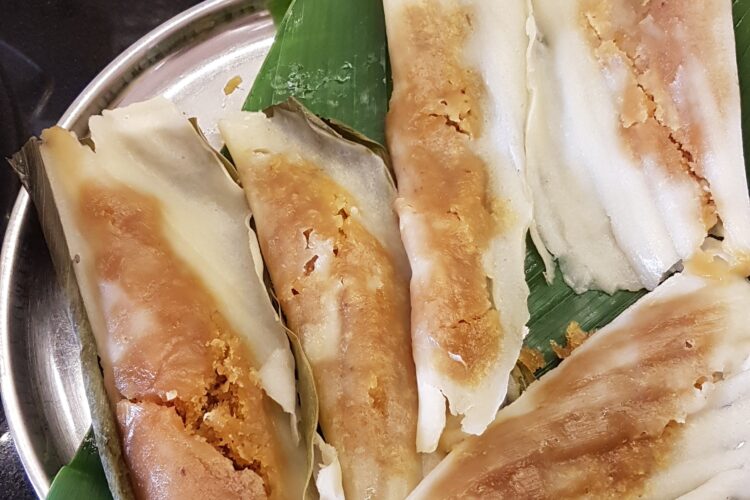Patoli recipe with detailed step-by-step photos and instructions. An elaborate post on patoli recipe, turmeric leaves, its benefits and how to make patolis easily.
What is a Patoli?
Patoli (singular) or patoleo (plural) are rice flour rolls (kind of wraps) stuffed with a coconut-jaggery filling and steamed in fresh turmeric leaves. The flavour of turmeric leaves gets infused in the patolis. Once steamed, the leaves are discarded and the patoli can be eaten plain or with a tsp of ghee.
It is a sweet prepared and offered as ‘naivedhyam’ during festivals like ‘Nagpanchami‘, ‘Gauri pooja‘, ‘Haritalika or Tay‘ along the coastal belt of Konkan and Goa.
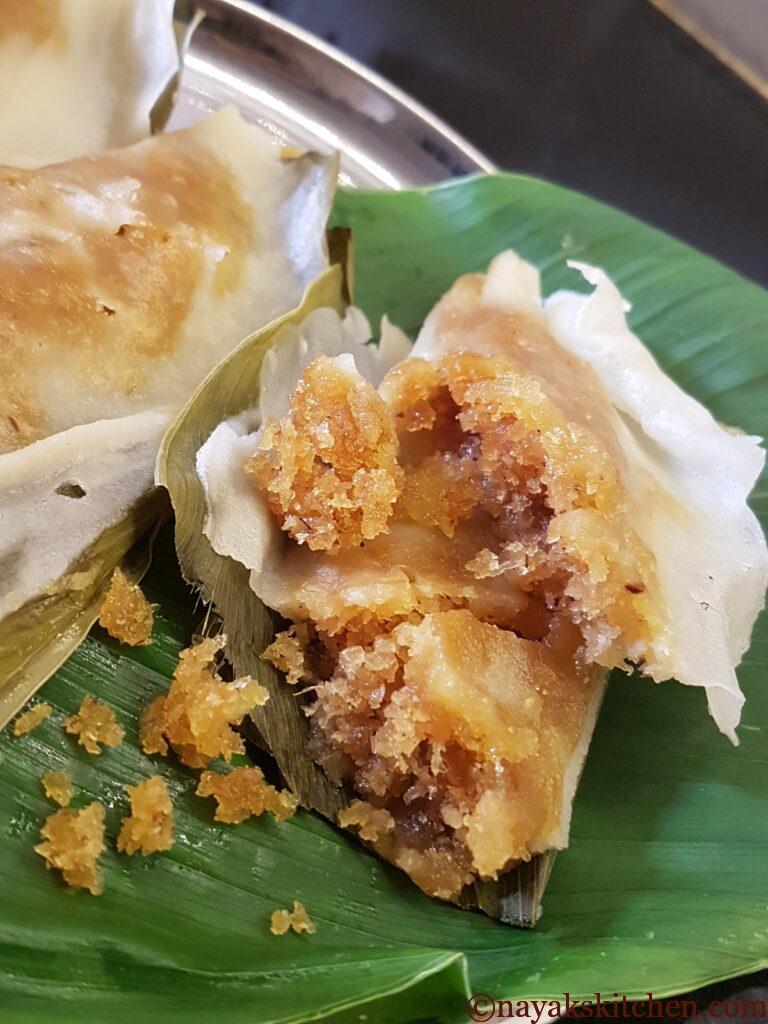
Patoli recipe is a very traditional recipe. The star ingredient here are the fragrant turmeric leaves which impart a heavenly aroma to the ‘patoli’ while steaming. This sweet has a close similarity to the well known ‘ukadiche modak’ but what sets a patoli a class apart are the turmeric leaves or ‘haldi pana’. A patoli cannot be prepared without haldi pana.
Turmeric leaves have a distinct aroma and smell. Furthermore, this renders a delectable taste to patolis. Totally heavenly! Also the goodness of turmeric leaves steeps into the patoli. This is a very healthy sweet as there is no deep-frying. Moreover we get the health benefits of turmeric leaves.
A thin paste of rice flour is spread on the leaves and a coconut-jaggery filling is placed in the centre. The leaves are then carefully sealed and steamed in a steamer. You can also use a idli steamer or a pressure cooker for steaming. Once the patolis are placed for steaming, a divine aroma fills up the entire home.
However, if you do not get turmeric leaves in your region then you can use banana leaves as an alternative. But to get an authentic flavour add at least one leaf to infuse some flavour. You can grow a few leaves in a pot for this purpose.

Shravan & turmeric leaves
Turmeric (botanically classified as Curcuma Longa) belongs to the ginger family Zingiberaceae. The leaves and roots of the turmeric plant are edible. The rhizomes (roots) of the plant are processed to yield a yellow powder. This (popularly known) turmeric powder is used in many Asian cuisines. Also it is an indispensable and key spice in Indian cuisine. The turmeric leaves are used to prepare or flavour many traditional sweet dishes.
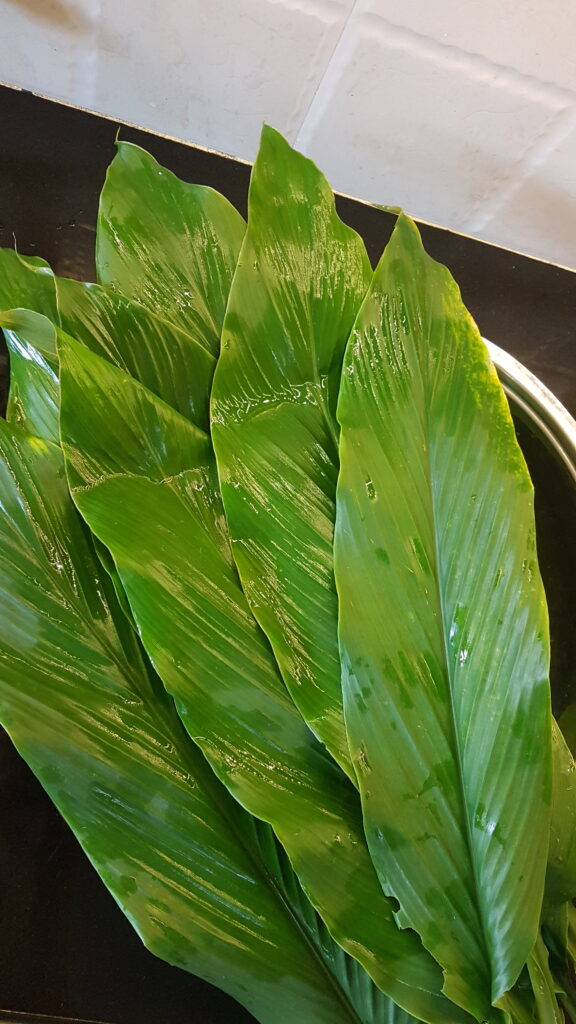
During the month of ‘Shravan’ turmeric leaves grow abundantly along the coastal areas of Goa and Konkan. As the monsoons set in, tiny shoots of turmeric leaves emerge from the soil and grow. Throughout monsoons i.e. July-August-September-October turmeric leaves grow in abundance.
You will see markets in Goa flooded with bundles of turmeric leaves. Some are small whereas some are very big. You can cut the big ones into twos or threes.
As the monsoons end the leaves dry and wither away but the roots remain in the soil. The rhizomes or roots which are very similar in appearance to ginger, remain dormant in the soil for almost a year. So once you plant turmeric it will give you turmeric leaves forever. Preferably plant them in the ground. You can also plant them in a pot but you will get a few turmeric leaves.
Turmeric leaves have antiseptic and anticarcinogenic properties. They boost digestion and are a vital spice in Ayurveda. They are also anti-bacterial, anti-viral and anti-inflammatory. Thus, patoli is an awesome sweet to include all the great benefits of turmeric leaves.
Which rice flour to use for patolis?
You can use any rice flour for the patoli recipe. However to get soft patolis ‘Ambemohar’ rice flour is the best. Ambemohar which literally means ‘mango blossom‘ is a fragrant rice variant which has a strong and distinct aroma. This rice is used to prepare ‘ukadiche modak‘ also. It has a slight sweet taste too. To prepare Ambemohar rice flour; wash the rice and drain the water completely. Let the rice dry. This may take around 24 hours. Then grind this rice in a flour mill and use it further in the recipe.
How to make a steamer to steam a large batch of patoleo?
We prepare almost over 50 patoleos on the day of ‘Nag Panchami’ which we share with friends and family. The quantity being huge I cannot steam them in a regular steamer or a small idli cooker. Hence, I prepare my own steamer, the method of the same I shall be sharing with you. You can steam 25-30 or more patolis at a time in two batches.
- Take a large utensil (about the capacity of 10 litres). Place a steel trivet or stand at the bottom. Also, place all the trimmed ends of turmeric leaves at the bottom.
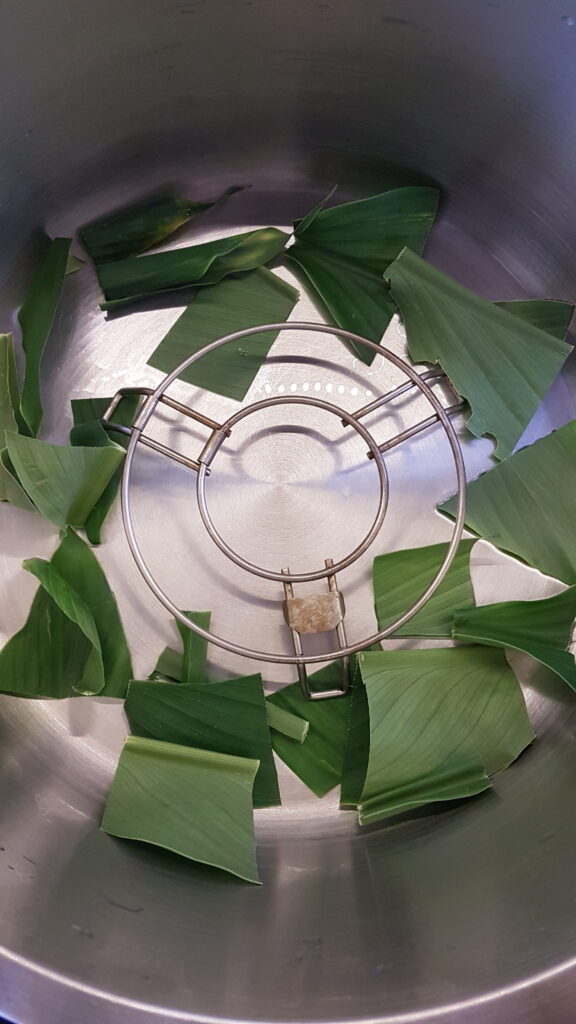
2. Pour water in it till the trivet submerges.
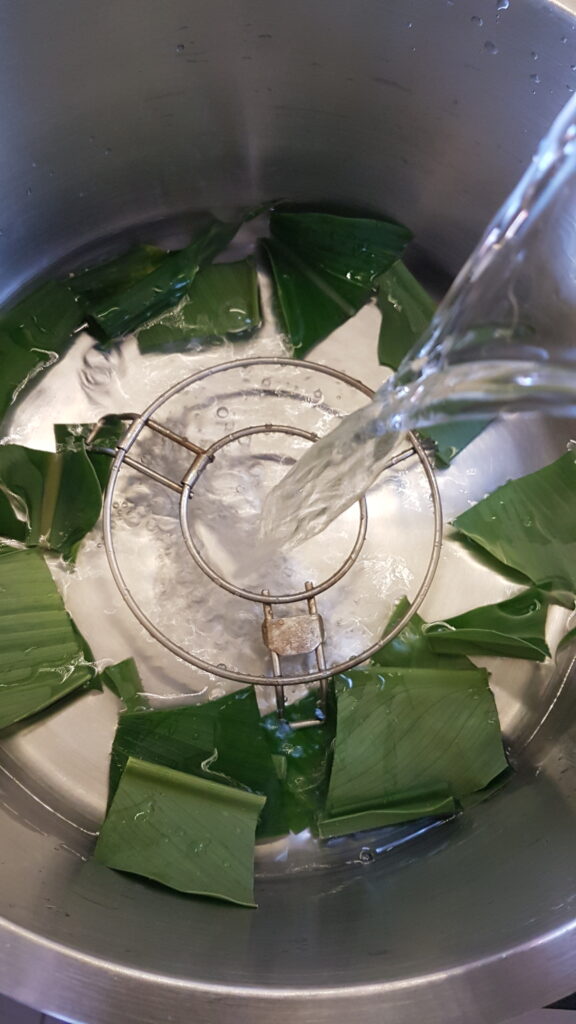
3. Place a small, round container on the stand as shown. I have used my pressure cooker container. The container should be stable. Also, it should not float. If it floats reduce the quantity of water till the container is steady.
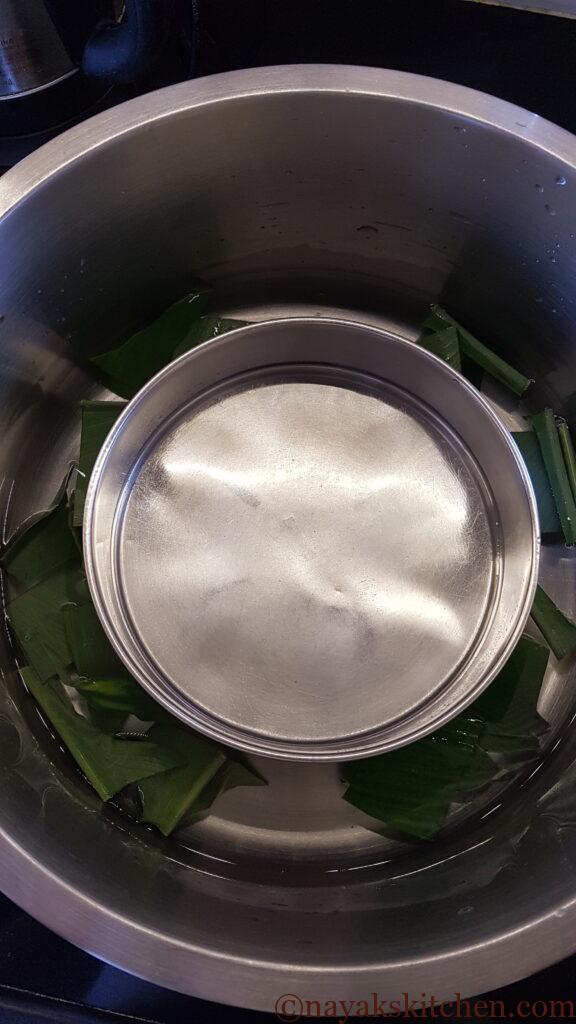
4. On top of the container place a perforated plate or sieve as shown.

5. Now you can arrange all the patoleo on this perforated sieve, close the lid and subsequently steam them.

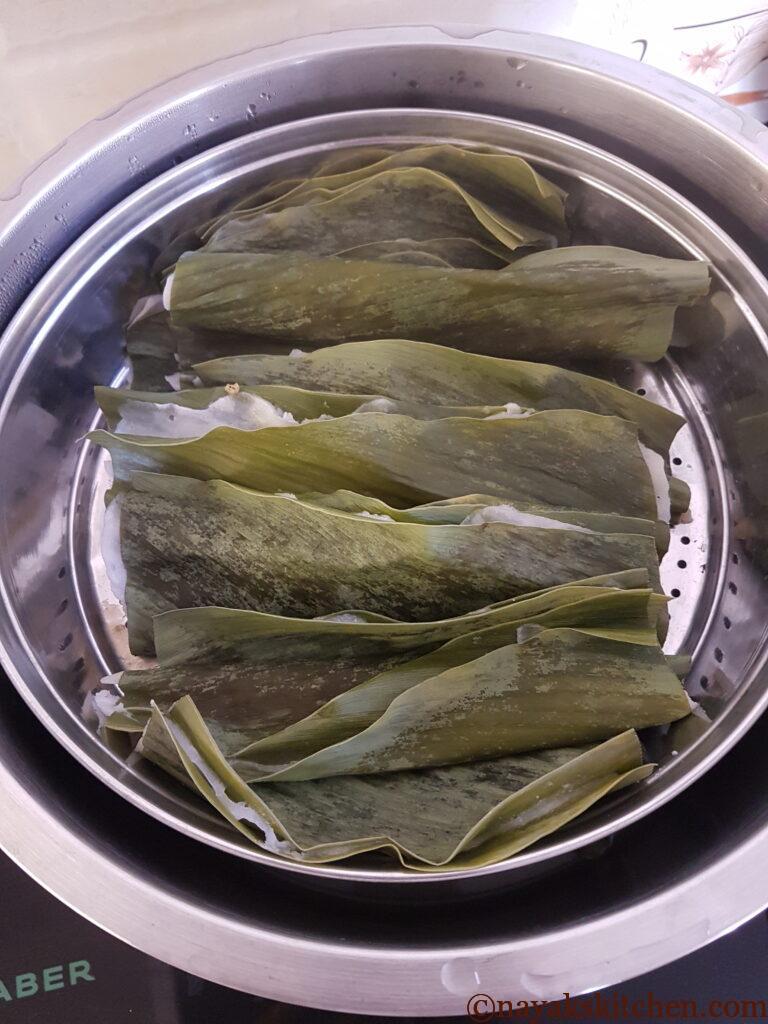
How to prepare patoli/patoleo? (Patoli Recipe)
- Wash the turmeric leaves with fresh water and allow them to dry. In addition, you can wipe them dry too. Trim the edges of the leaves. Do not discard the trimmed edges. You can use them in the steamer while steaming. Also, if the leaves are big you can cut them into two or three pieces.

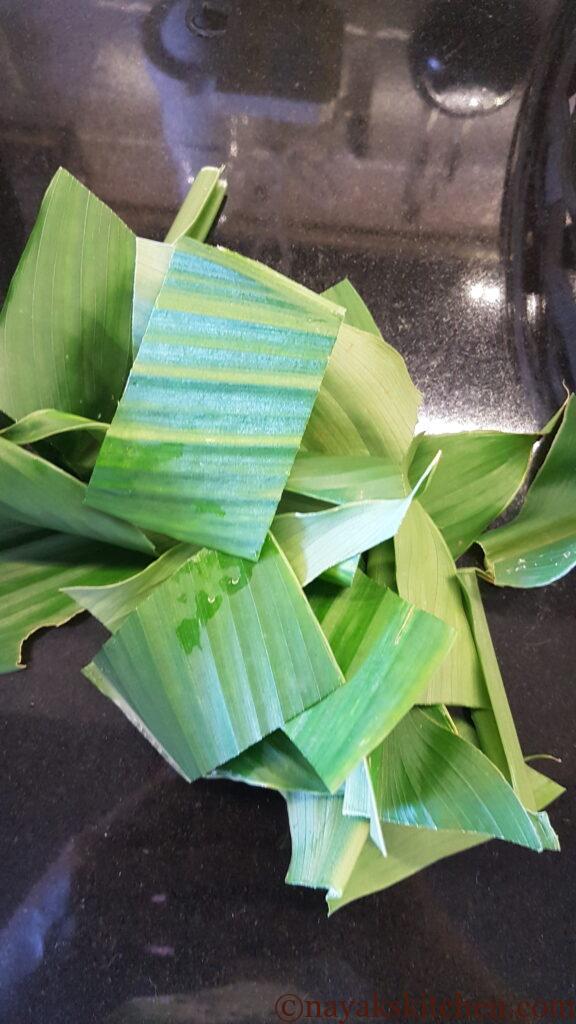
Since my leaves were big I cut them into two.
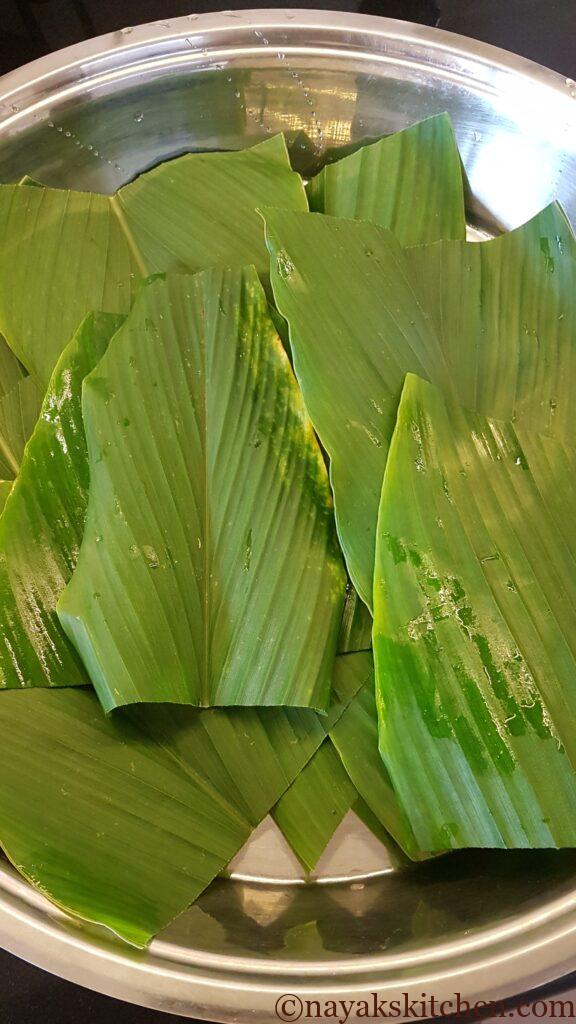
Preparing the stuffing/filling for patoli recipe
2. Heat a kadhai and add jaggery to it. Let the jaggery melt till it turns into a liquid.
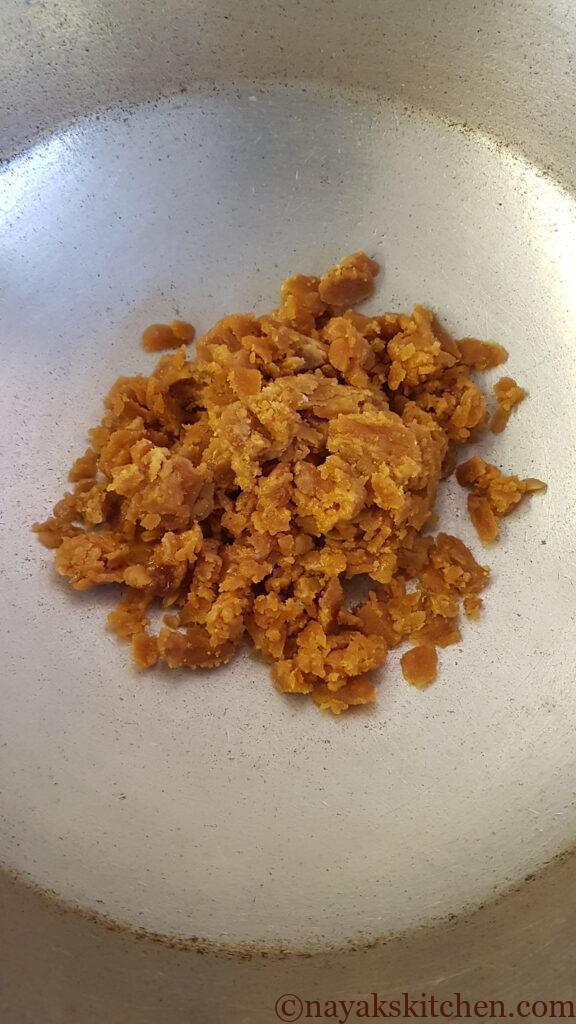

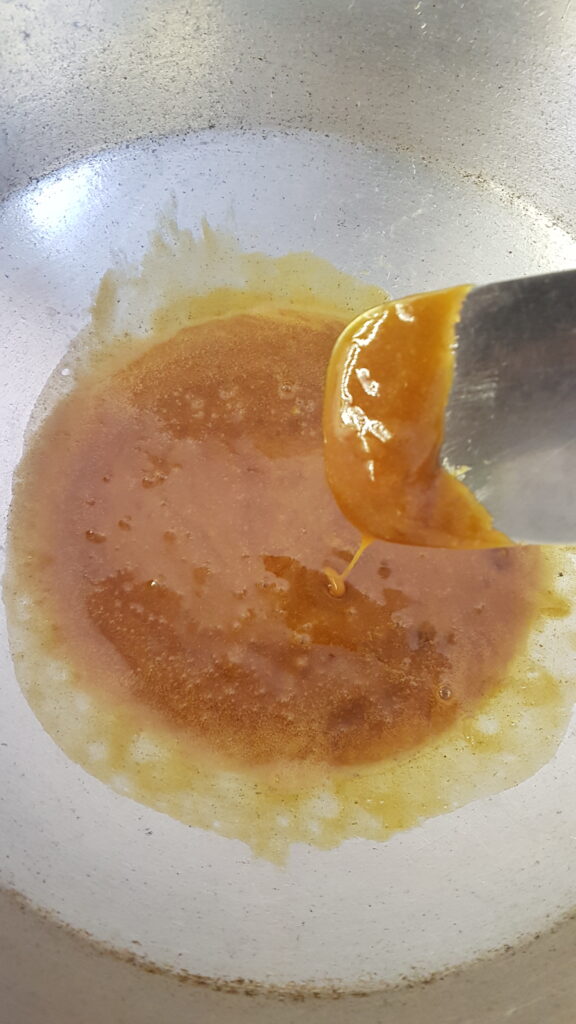
3. Once the jaggery melts, add freshly grated coconut to it.
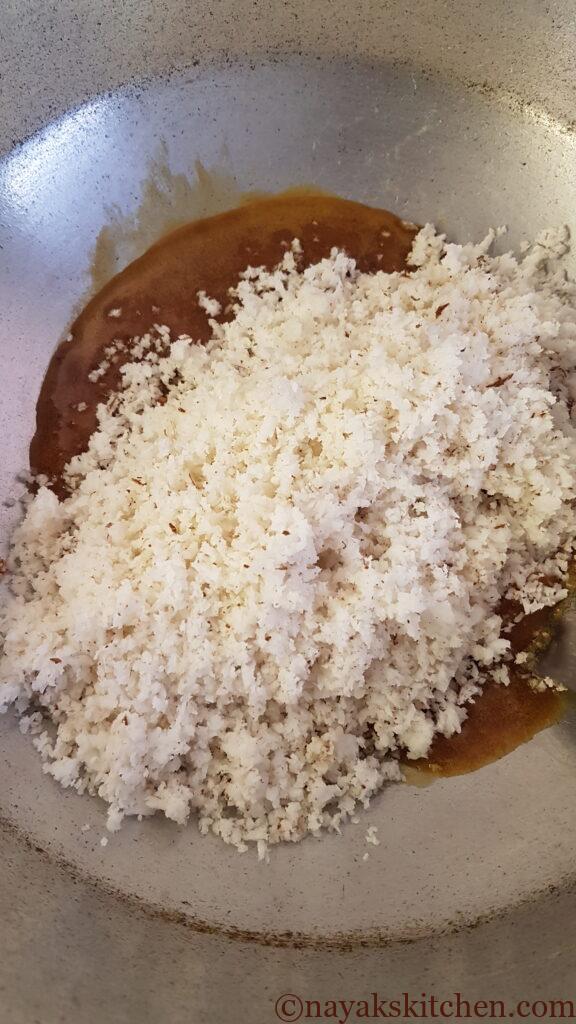
4. Mix everything well. Also, add a pinch of salt to the mixture.
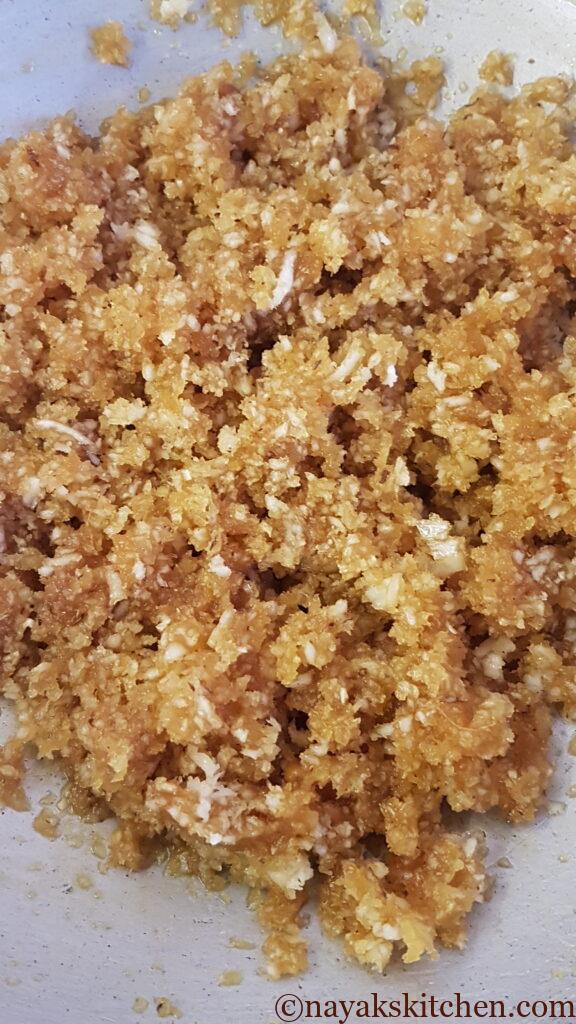
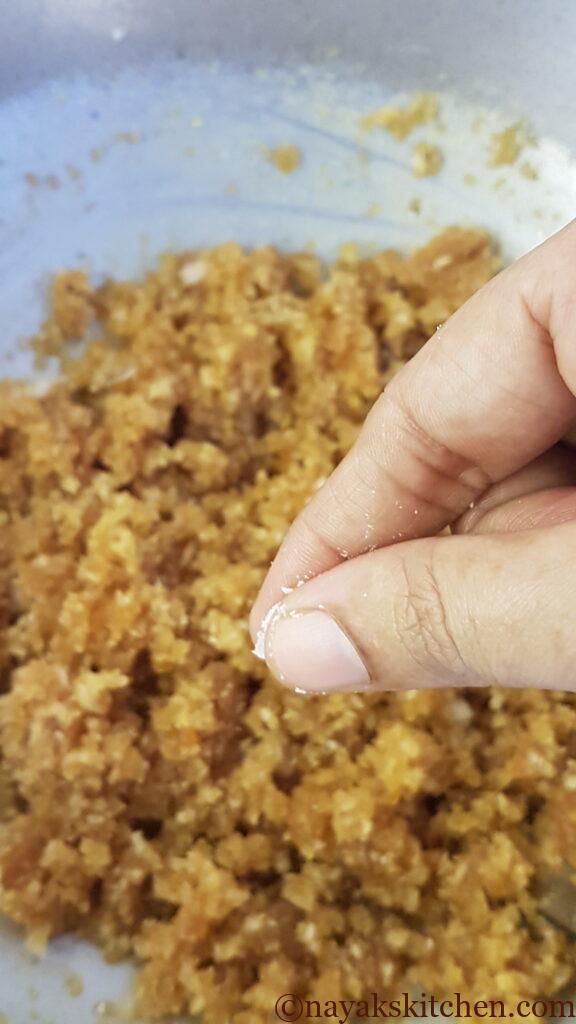
5. Add cardamom powder and ghee (clarified butter).
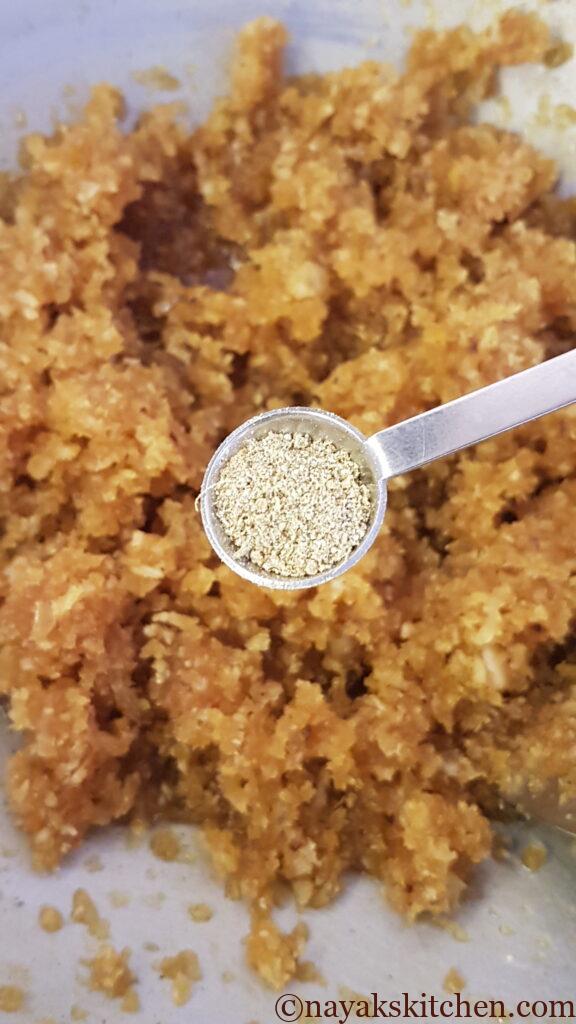
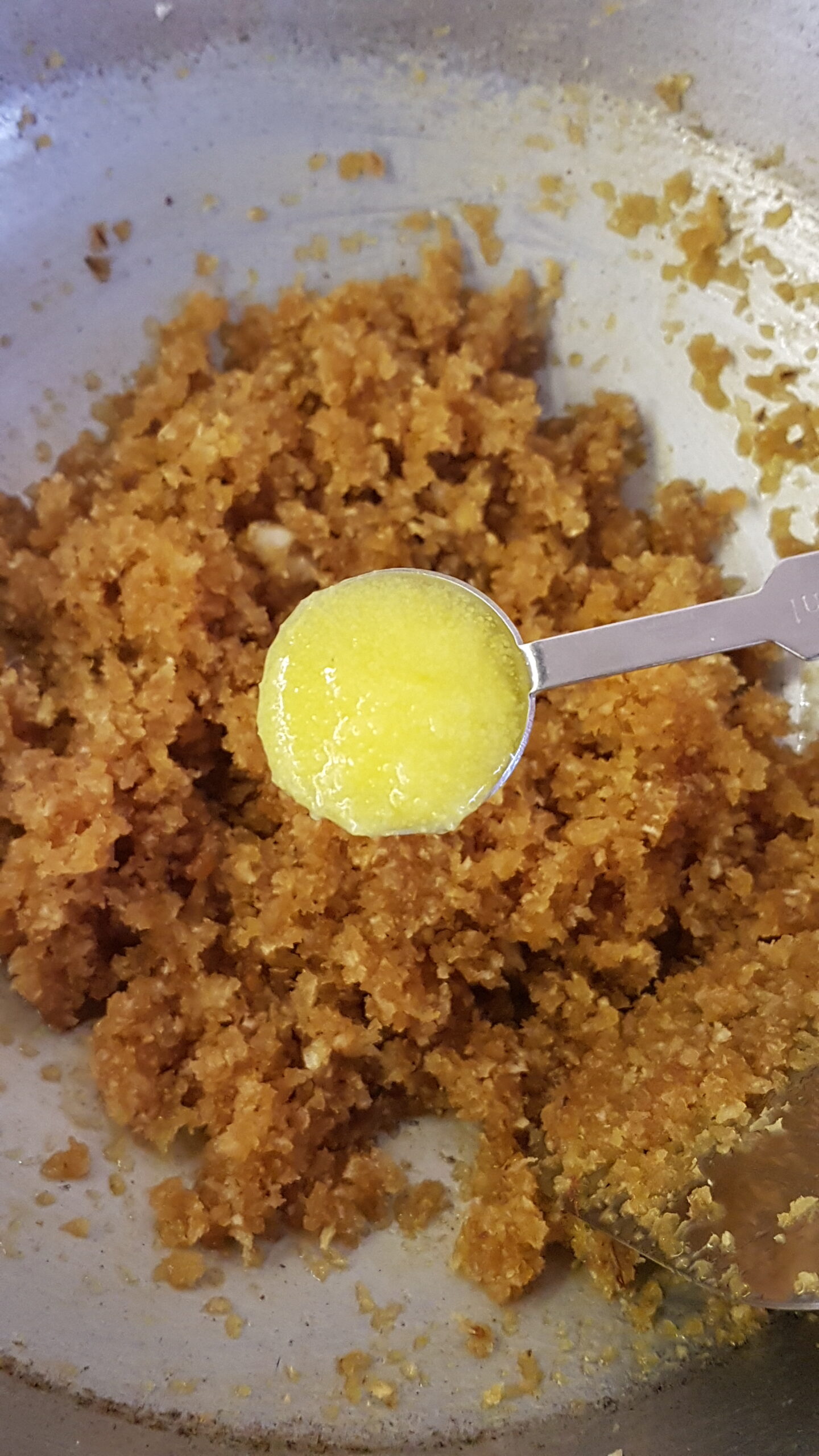
6. Combine everything well and allow to cook for around 7-8 minutes. The jaggery should dry up a bit. But be cautious not to overcook as it will harden the stuffing.
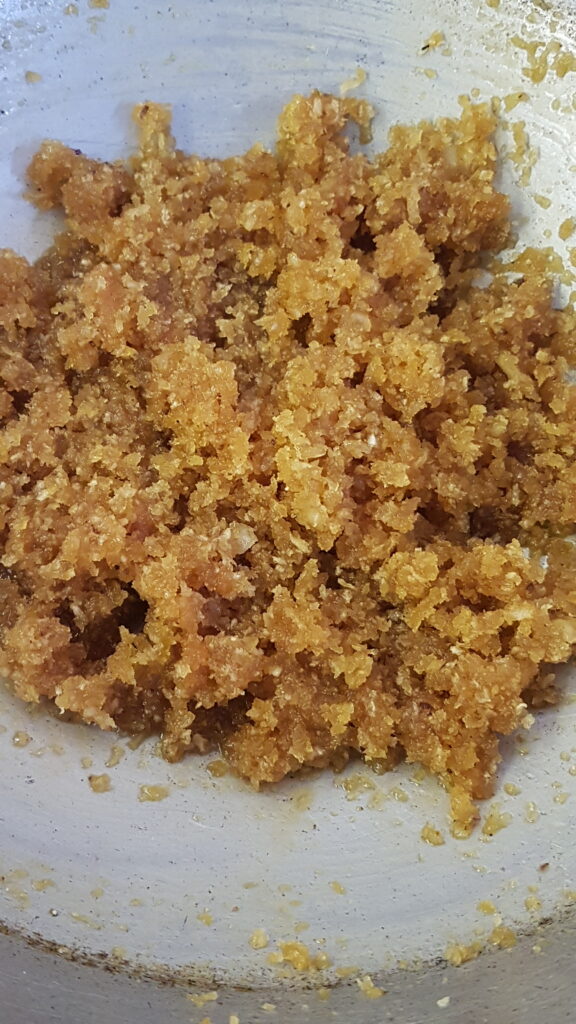
7. Stuffing is ready! Allow it to cool.
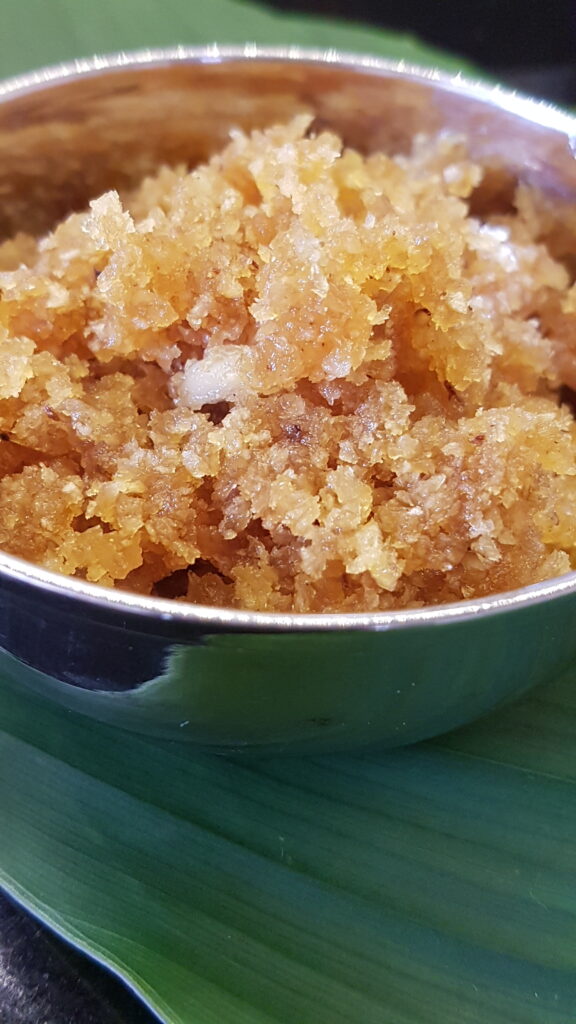
Preparing the batter for patoli recipe
8. Take the rice flour in a bowl. Add maida to it. Maida acts as a binding agent. Also, add sugar to the mixture. Sugar imparts a hint of sweetness to the outer covering.
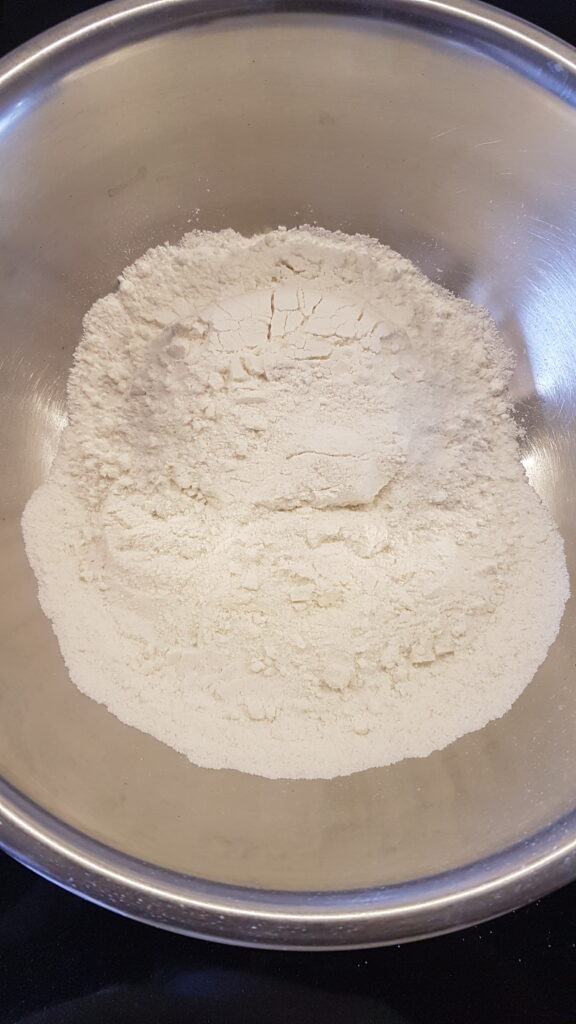
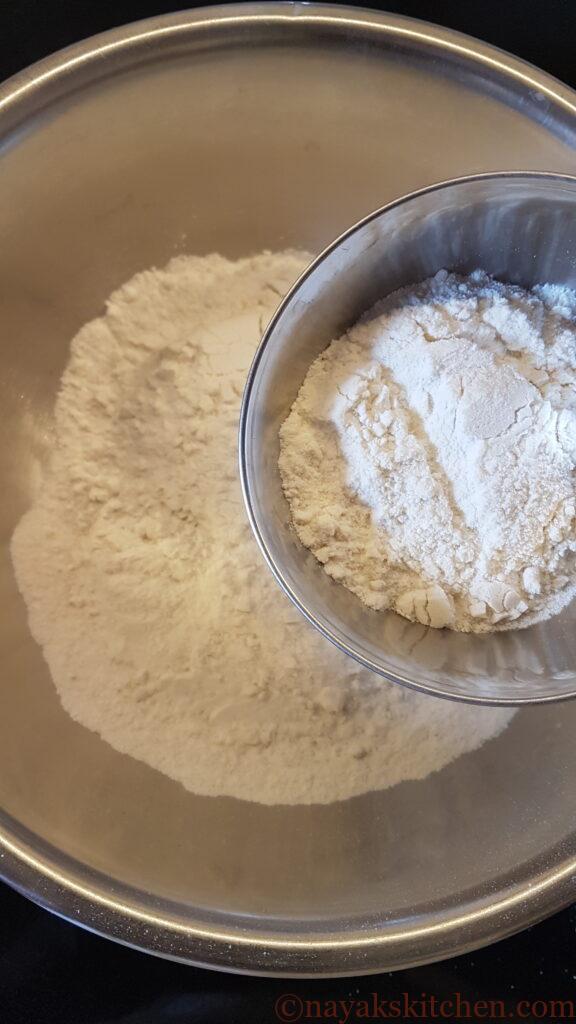
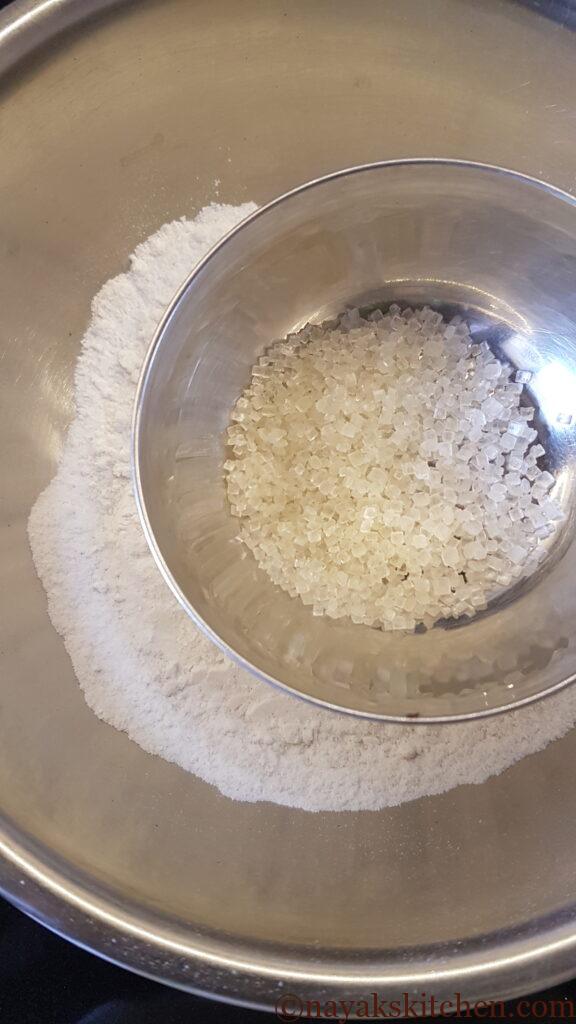
9. Add ghee and salt to it.
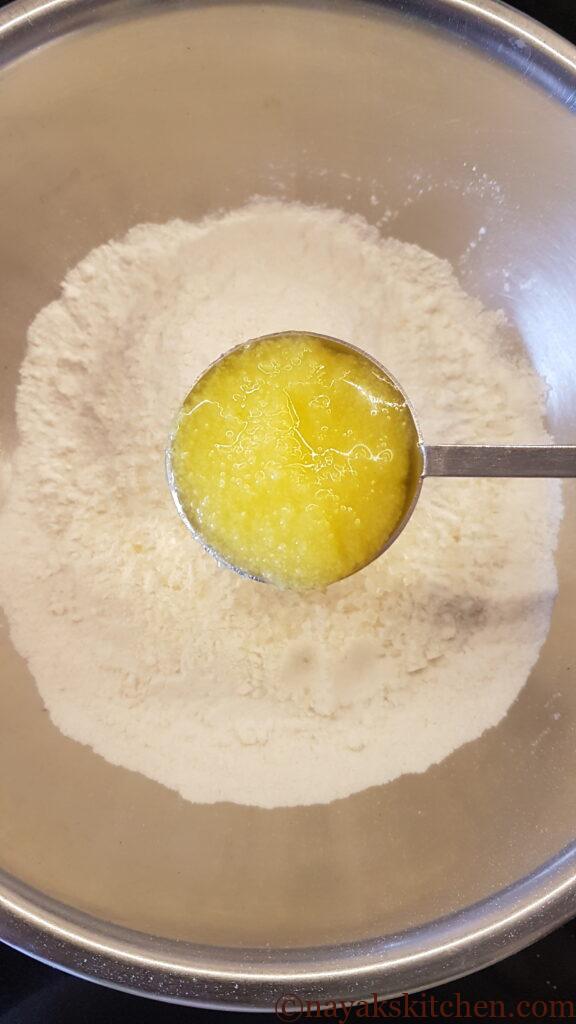

10. Now slowly start adding water to it. Mix it well to form a batter. Use a whisk to avoid forming lumps in the batter. The batter should be neither runny nor thick.
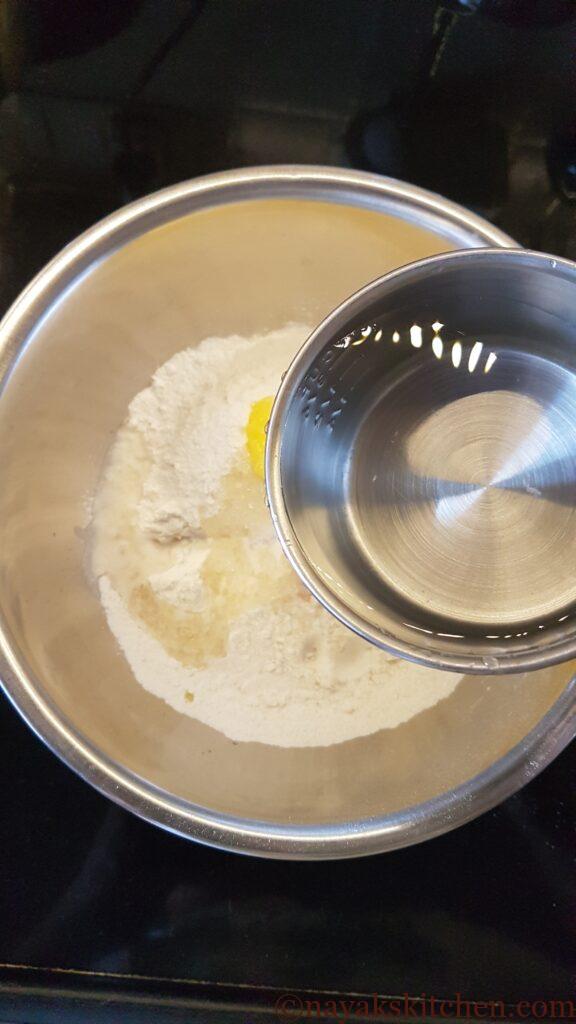
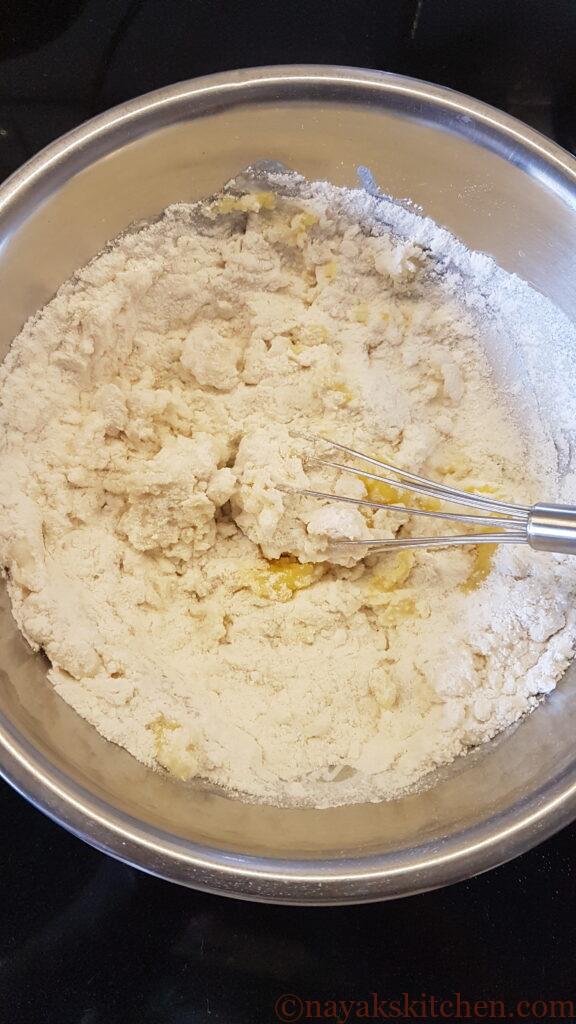
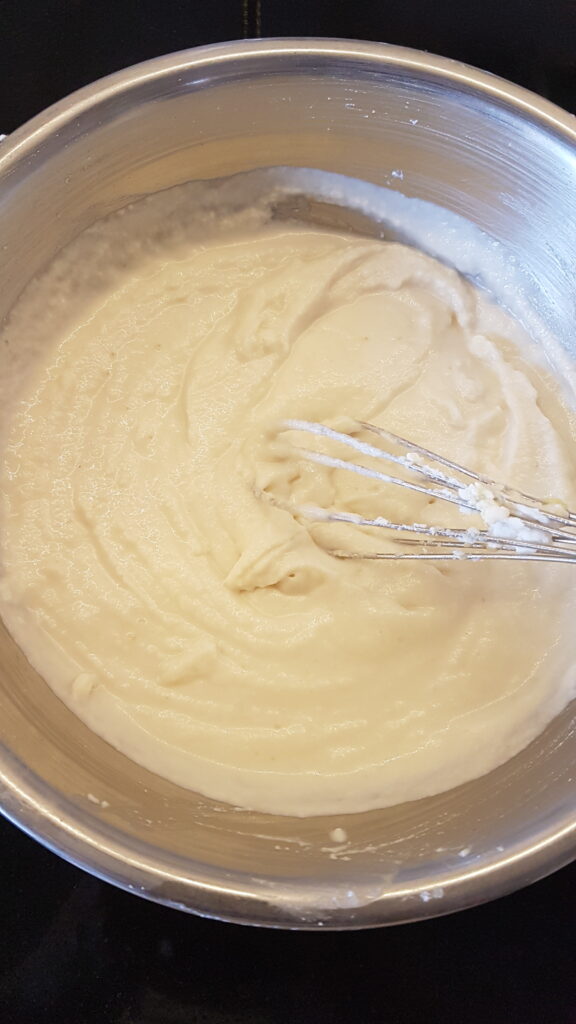
Making Patoli
- Get all the items ready.
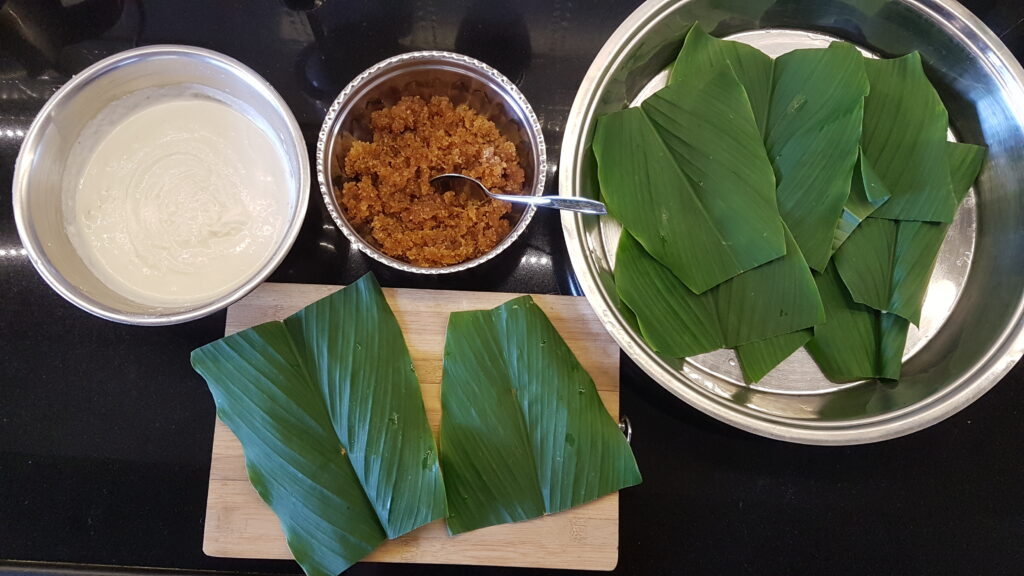
2. Keep water for heating in a steamer while you prepare the patoleo.

3. Smear the leaf with a thin layer of batter, moving from down to top direction.
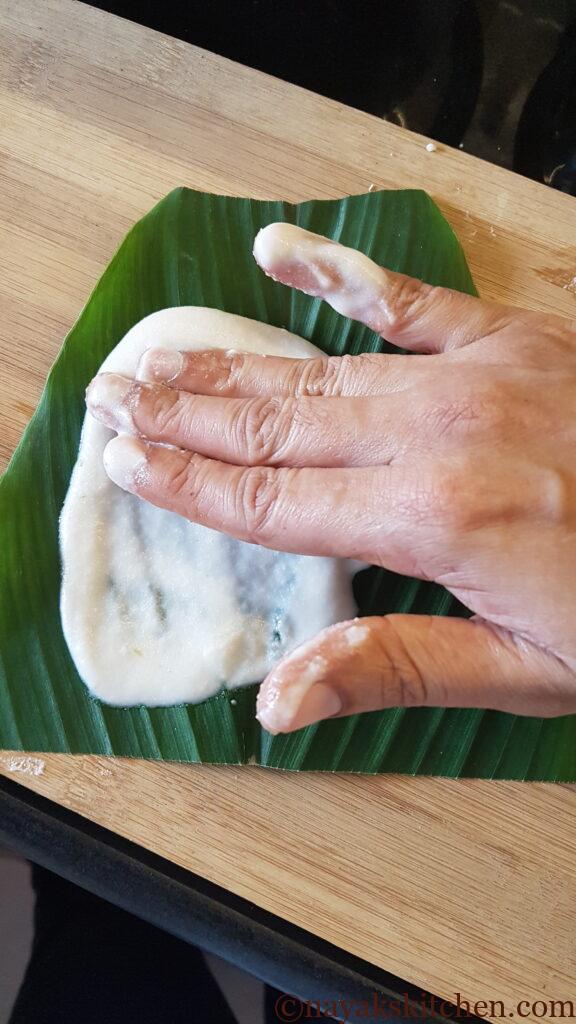
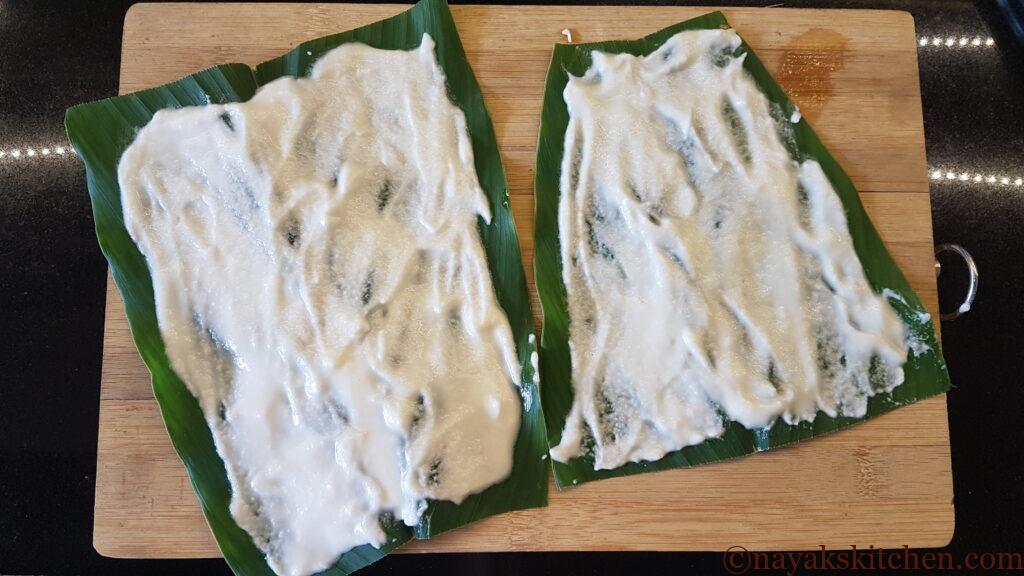
4. Place the coconut-jaggery filling slightly towards the right of the leaf.
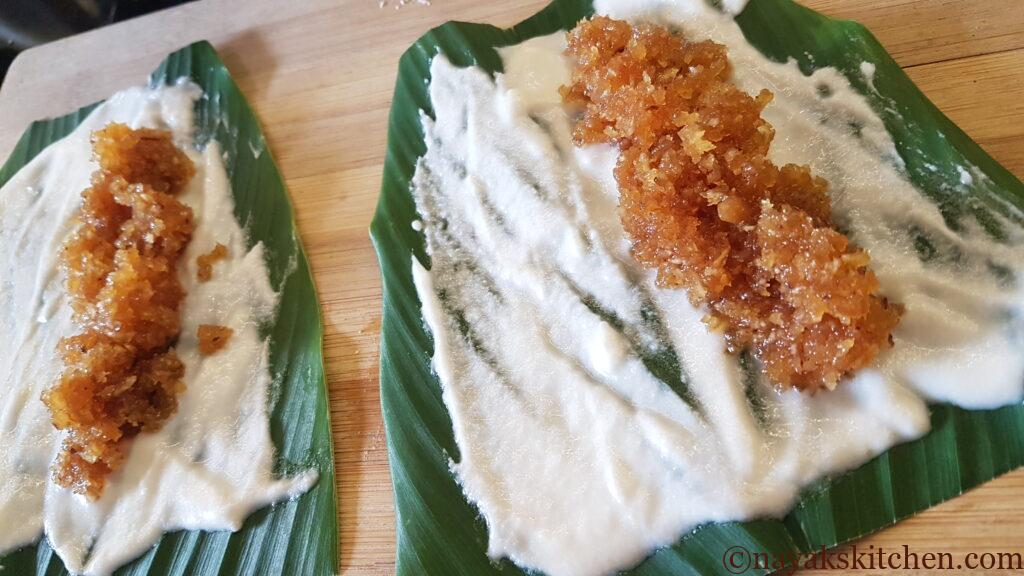
5. Fold the leaf onto one side and seal the edges. Do not press the patoli too hard.
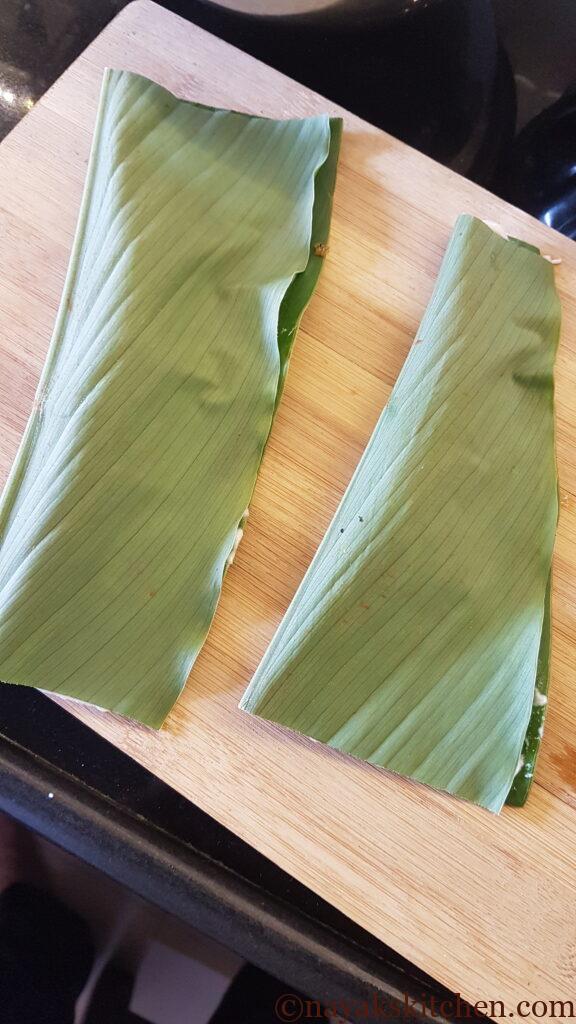
6. Similarly, finish the remaining patoleo.
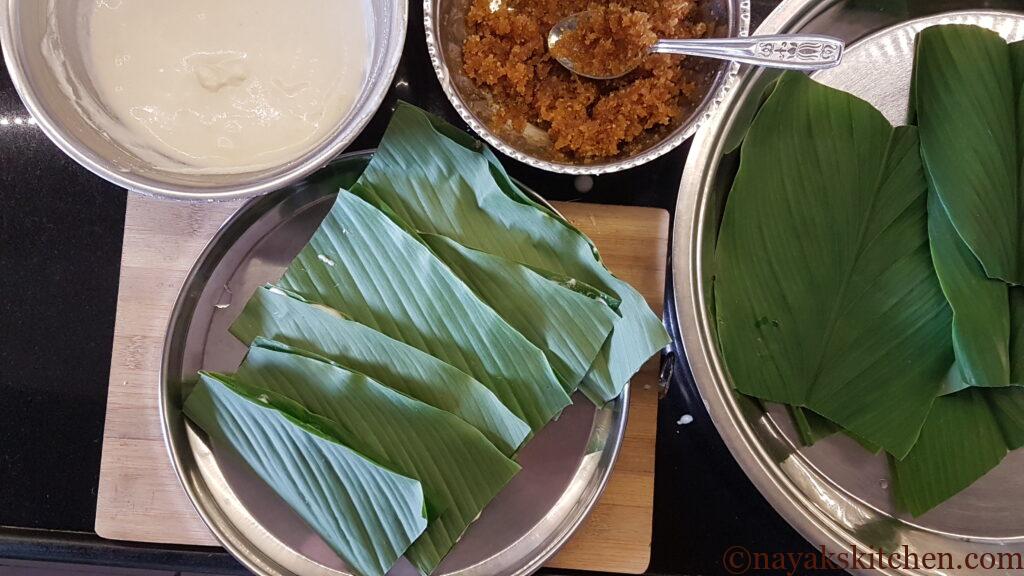
7. Arrange the patoleo in the steamer with the open side facing up. This is to prevent any jaggery from oozing out from the patoli while steaming. Steam the patolis for about 25-30 minutes.
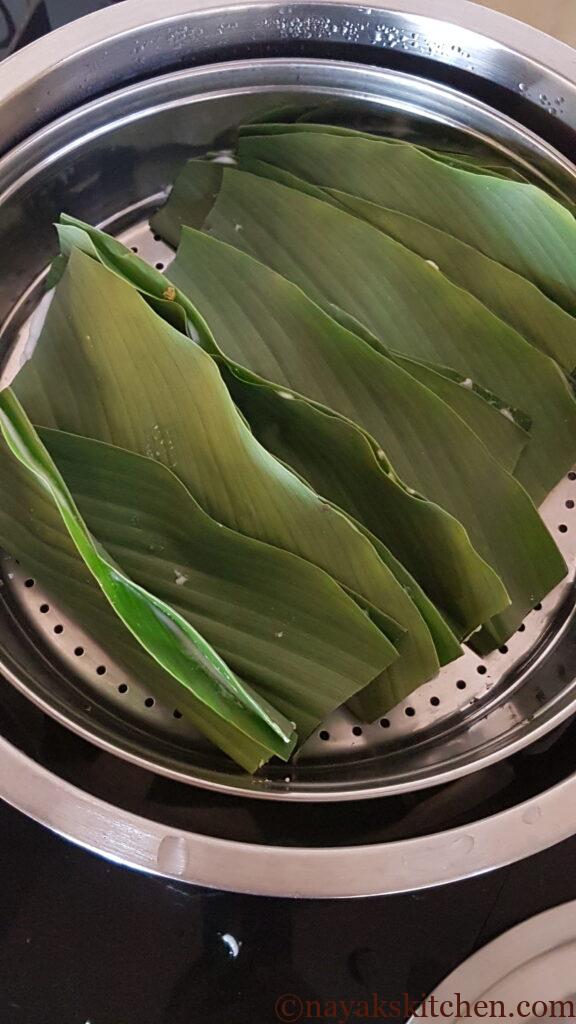
8. The leaf colour changes from dark green to a pale colour once they are cooked. You can see the difference in the images compared below.


9. Remove the leaf and discard it. Serve hot with a little ghee.
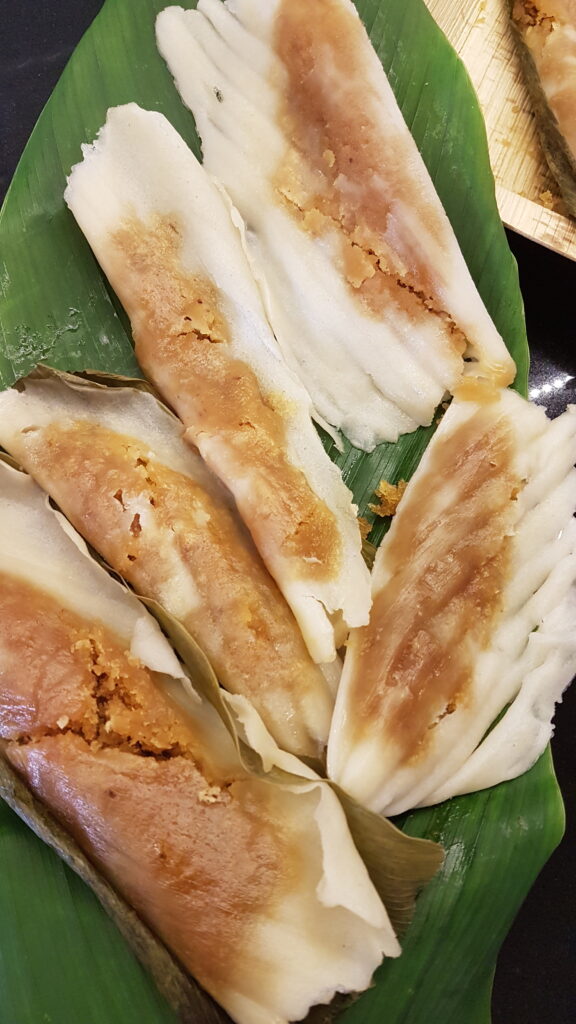
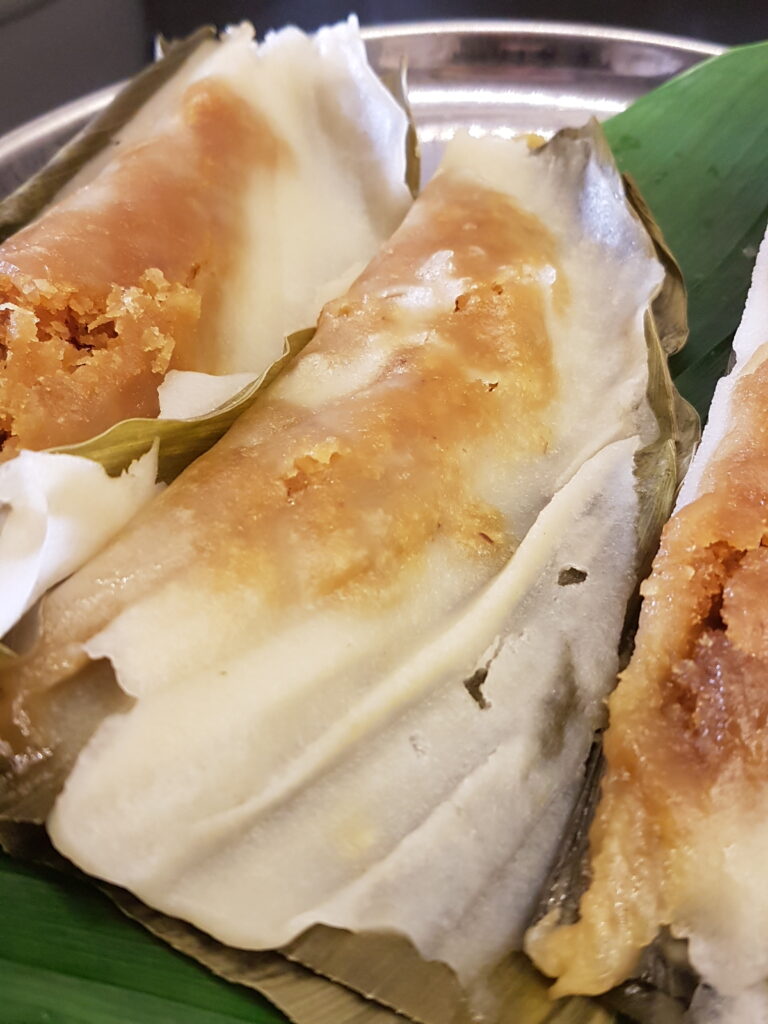
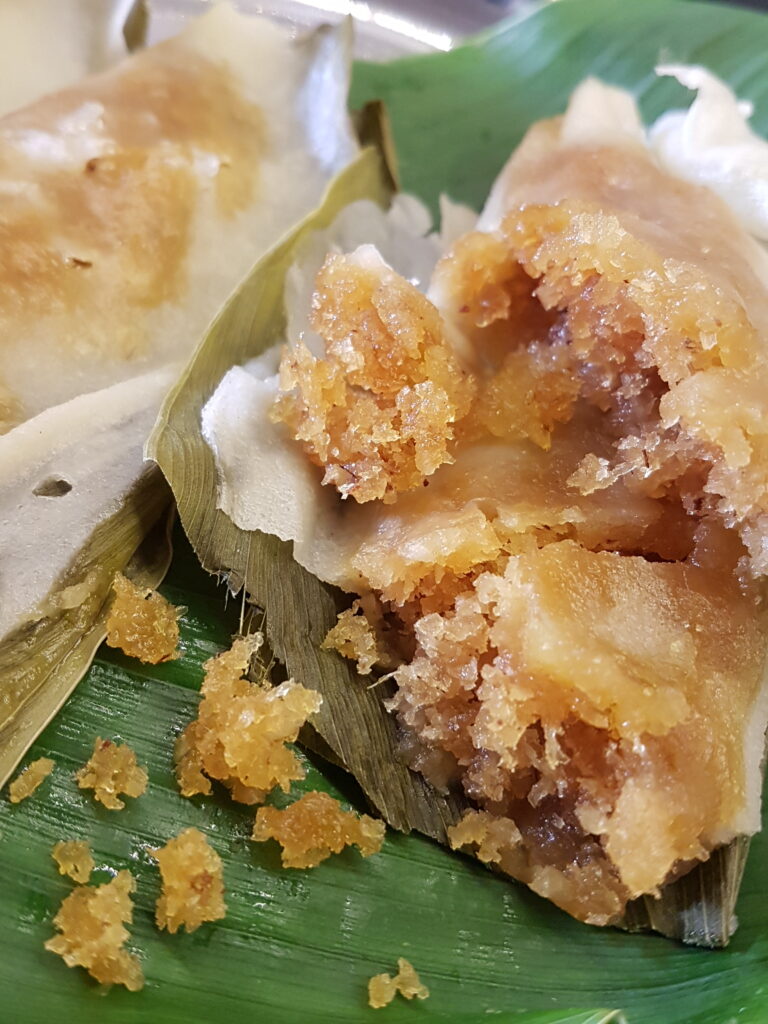
Patoli Recipe
Course: SweetsCuisine: GoanDifficulty: Medium15
patolis30
minutes30
minutes1
hourPatoli is rice flour roll stuffed with a coconut-jaggery filling and steamed in fresh turmeric leaves.
Ingredients
1 CUP = 250 ML
1 tbsp =15 ml
1 tsp = 5 ml
Fresh turmeric leaves – 15 nos.
- For the batter
Rice flour – 1 cup
Maida – 2 tbsp
Sugar – 2 tsp
Ghee – 1 tbsp
Salt – 1/4 tsp
Water – 1 and 1/2 cups
- For the filling
Fresh grated coconut – 2 and 1/2 cups
Jaggery – 1 cup (heaped)
Ghee – 1 tsp
Cardamom powder – 1/4 tsp
Salt – a pinch
Directions
- Wash the turmeric leaves with fresh water and allow them to dry. You can wipe them dry too.
- Trim the edges of the leaves. Do not discard the trimmed edges. You can use them in the steamer while steaming.
- If the leaves are big you can cut them into two or three pieces.
- For the filling
- Heat a kadhai and add jaggery to it. Let the jaggery melt till it turns into a liquid.
- Once the jaggery melts, add freshly grated coconut to it.
- Mix everything well. Add a pinch of salt to the mixture.
- Add cardamom powder and ghee (clarified butter).
- Combine everything well and allow to cook for around 7-8 minutes. The jaggery should dry up a bit. But be cautious not to overcook as it will harden the stuffing.
- Allow the coconut jaggery filling to cool.
- For the batter
- Take the rice flour in a bowl. Add maida and sugar to it.
- Add ghee and salt to it.
- Now slowly start adding water to it. Mix it well to form a batter. Use a whisk to avoid forming lumps in the batter. The batter should be neither runny nor thick.
- Making patolis
- Keep water for heating in a steamer while you prepare the patoleo.
- Smear the leaf with a thin layer of batter, moving from down to top direction.
- Place the coconut-jaggery filling slightly towards the right of the leaf.
- Fold the leaf onto one side and seal the edges. Do not press the patoli too hard.
- Arrange the patoleo in the steamer with the open side facing up. This is to prevent any jaggery from oozing out from the patoli while steaming. Steam the patolis for about 25-30 minutes.
- The leaf colour changes from dark green to a pale colour once they are cooked.
- Remove the leaf and discard it. Serve hot with a little ghee.
Notes
- Preferably use ‘Ambemohar’ rice flour for soft patolis.
- Do not overcook the filling else it will become hard.
- If the batter becomes runny add a little rice flour to it.
